Corn has an important role in American history -- it's been consumed in the Americas for more than 5,000 years, according to Purdue University, and remains a dietary staple today. Stone-ground corn -- whole-grain cornmeal, which is ground between two stones -- makes a welcome addition to baked goods and also works as a base for savory or sweet porridge. Whether you opt for yellow or white stone-ground corn, you'll increase your vitamin, mineral and fiber intakes. Yellow stone-ground corn has a leg up on its white counterpart, however, because it offers more beneficial carotenoids.
Macronutrients and Fiber
A 1/2-cup serving of stone-ground corn -- yellow or white -- contains 221 calories. It gets most of its energy from carbohydrates, with each serving's 47 grams of carbs accounting for 77 percent of its total calories. The majority of these carbs get digested to give rise to sugar, a fuel source for your tissues, and carbohydrates also help eliminate waste from your body. A 1/2-cup serving of stone-ground corn contains 4.5 grams of dietary fiber, an indigestible carbohydrate that lowers cholesterol and prevents constipation. A single serving of stone-ground corn makes 12 percent of the daily fiber intake recommendation for men and 17 percent for women, according to the Institute of Medicine. Each serving of stone-ground corn contains small amounts of protein and fat -- 5 grams and 2 grams, respectively.
Vitamin Content
Stone-ground corn boosts your vitamin intake, especially your intake of vitamins B-1 (thiamine) and B-6 (pyridoxine). The thiamin from your diet helps promote immune function, which protects you from infectious disease and helps your cells make usable energy. Pyridoxine aids in healthy brain development, and it also helps your brain cells communicate with each other. A 1/2-cup serving of white or yellow stone-ground corn boasts 235 micrograms of thiamin and 185 micrograms of pyridoxine. This makes up 14 percent of your daily B-6 requirements, as well as 21 percent and 20 percent of the daily B-1 intakes for women and men, respectively, according to the Institute of Medicine.
Beneficial Minerals
Incorporate stone-ground corn into your diet to consume more minerals, especially magnesium and selenium. A 1/2-cup portion of either yellow or white stone-ground corn contains 77 milligrams of magnesium, which is 18 percent of the daily recommended intake for men and 24 percent for women, according to the Institute of Medicine. Each serving also boasts 9.5 micrograms of selenium, or 17 percent of your daily need. The selenium in stone-ground corn fights the damaging effects of free radicals -- chemicals linked to cancer growth and aging. Magnesium supports healthy kidney function, and it also helps your cells make energy.
Other Nutrients
Choose yellow stone-ground corn over its white counterpart to boost your lutein and zeaxanthin. These two nutrients -- part of a nutrient family called carotenoids -- play an important role in healthy vision. They make up part of your retinas -- the tissues tasked with detecting color and light and then sending visual information to your brain -- and filter light to prevent retinal damage. Including lots of lutein and zeaxanthin in your diet -- at least 6,000 micrograms each day, reports the Linus Pauling Institute -- also fights age-related macular degeneration. A serving of yellow stone-ground corn contains 827 micrograms of lutein and zeaxanthin -- 14 percent of your daily goal -- while white corn offers a paltry 3 micrograms per serving.
Related Articles

The Nutritional Value of Edamame Beans

Nutrition Value of Corn Meal

How to Make Hominy With Baking Soda
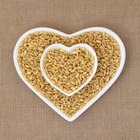
Kamut Vs. Wheat

How to Cook Oven-Roasted Corn
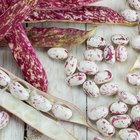
What Is the Nutrition for Cranberry ...

Vitamins for Mental Alertness

Nutrition Information on Blueberries

Why Is My Boiled Corn Chewy?

Is Teff Flour Gluten-Free?
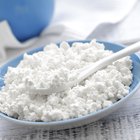
Benefits of Cottage Cheese

What Is the Nutritional Value of ...

Which Is Highest in Fiber: Carrots, ...
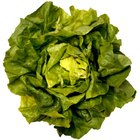
Nutritional Benefits of Butter Leaf ...
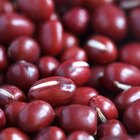
Nutrition Information for Adzuki Beans

Quaker Oats Instant Grits: Nutritional ...
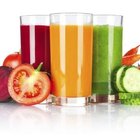
Nutrition Drinks for Diabetics

The Sugar in Mangoes

How to Make Pumpernickel Flour

Golden Flax Seed Vs. Dark Flax Seed
References
- Purdue University: Corn
- USDA National Nutrient Database: Cornmeal, Whole-Grain, Yellow
- USDA National Nutrient Database: Cornmeal, Whole-Grain, White
- Linus Pauling Institute: Fiber
- University of Maryland Medical Center: Vitamin B-1 (Thiamine)
- University of Maryland Medical Center: Vitamin B-6 (Pyridoxine)
- University of Maryland Medical Center: Selenium
- University of Maryland Medical Center: Magnesium
- Linus Pauling Institute: Carotenoids
Resources
Writer Bio
Sylvie Tremblay holds a Master of Science in molecular and cellular biology and has years of experience as a cancer researcher and neuroscientist.